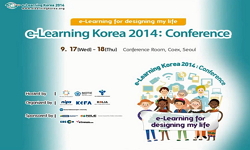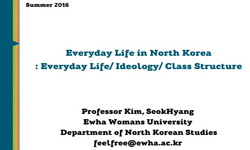Purpose: Although violence occurs frequently in Korean television dramas, its description or definition is unusual. Many studies have shown that TV dramas have a powerful effect on society and the violence shown in medical dramas helps in comprehensio...
http://chineseinput.net/에서 pinyin(병음)방식으로 중국어를 변환할 수 있습니다.
변환된 중국어를 복사하여 사용하시면 됩니다.
- 中文 을 입력하시려면 zhongwen을 입력하시고 space를누르시면됩니다.
- 北京 을 입력하시려면 beijing을 입력하시고 space를 누르시면 됩니다.
https://www.riss.kr/link?id=A104608785
- 저자
- 발행기관
- 학술지명
- 권호사항
-
발행연도
2013
-
작성언어
Korean
- 주제어
-
등재정보
KCI등재
-
자료형태
학술저널
- 발행기관 URL
-
수록면
109-115(7쪽)
-
KCI 피인용횟수
3
- 제공처
-
0
상세조회 -
0
다운로드
부가정보
다국어 초록 (Multilingual Abstract)
Many studies have shown that TV dramas have a powerful effect on society and the violence shown in medical dramas helps in comprehension of hospital violence occurring in real life. Therefore, this study will cover the types and levels of violence.
Methods: We selected five recent Korean medical dramas.
These five dramas, which consisted of 94 episodes and were broadcast from 2007 to 2011, are analyzed. Violence is limited to the occurrence inside the hospital; violence that occurs outside of the hospital is excluded. Media violence is analyzed within PAT (perpetrator-action-target). In addition,the violence levels and violence relationships are analyzed.
Results: Among the types of violence, 88.5% is verbal abuse, 3.5% is physical threat, and 8.0% is physical violence.
In comparison of the violence relationship, violence between a doctor and a doctor forms the highest rate of 72.6%. In the level of violence, 0 level of violence caused by verbal abuse is the highest (88.5%); however, 5 level of violence level, which is death, is not observed. There are 1475 minutes of violence scenes from 6243 minutes, which is 23.6% of total time.
Conclusion: Frequency of violence in Korean medical dramas is higher than that of normal dramas. Considering the powerful influence of the mass media, the violence of medical dramas should be controlled. To resolve the problem,the role of advisory doctors seems important.
Purpose: Although violence occurs frequently in Korean television dramas, its description or definition is unusual.
Many studies have shown that TV dramas have a powerful effect on society and the violence shown in medical dramas helps in comprehension of hospital violence occurring in real life. Therefore, this study will cover the types and levels of violence.
Methods: We selected five recent Korean medical dramas.
These five dramas, which consisted of 94 episodes and were broadcast from 2007 to 2011, are analyzed. Violence is limited to the occurrence inside the hospital; violence that occurs outside of the hospital is excluded. Media violence is analyzed within PAT (perpetrator-action-target). In addition,the violence levels and violence relationships are analyzed.
Results: Among the types of violence, 88.5% is verbal abuse, 3.5% is physical threat, and 8.0% is physical violence.
In comparison of the violence relationship, violence between a doctor and a doctor forms the highest rate of 72.6%. In the level of violence, 0 level of violence caused by verbal abuse is the highest (88.5%); however, 5 level of violence level, which is death, is not observed. There are 1475 minutes of violence scenes from 6243 minutes, which is 23.6% of total time.
Conclusion: Frequency of violence in Korean medical dramas is higher than that of normal dramas. Considering the powerful influence of the mass media, the violence of medical dramas should be controlled. To resolve the problem,the role of advisory doctors seems important.
참고문헌 (Reference)
1 하승태, "지상파 및 케이블 방송의 청소년 시청가 프로그램에 나타난 폭력성의 비교연구" 한국청소년정책연구원 19 (19): 357-384, 2008
2 민영, "주시청시간대 지상파 텔레비전의 폭력성 연구폭력의 양과 유형을 중심으로" 한국방송학회 21 (21): 84-126, 2007
3 김현숙, "일개병원의 특수부서 간호사에서 언어폭력, 사회적 지지와 이직의도의 연관성" 대한직업환경의학회 21 (21): 388-395, 2009
4 임기영, "의사집단 내 폭력현황 및 권의주의와 공격성, 충동성, 성격특징과의 상관" 한국의학교육학회 16 (16): 299-308, 2004
5 박정규, "응급의료센터 폭력의 실태와 대처 방안" 대한응급의학회 15 (15): 575-579, 2004
6 최웅지, "응급실 폭력의 실태와 폭력 예방교육의 효과" 대한응급의학회 16 (16): 221-228, 2005
7 김진철, "응급실 폭력에 관한 연구" 대한응급의학회 14 (14): 309-313, 2003
8 김수연, "응급실 간호사가 경험한 폭력과 폭력반응에 관한 조사연구" 기본간호학회 14 (14): 446-456, 2007
9 정효주, "병원 내 간호사의 언어폭력 경험에 관한 연구" 대한의료커뮤니케이션학회 6 (6): 118-126, 2011
10 Krug EG, "World report on violence and health" World Health Organization 1-331, 2002
1 하승태, "지상파 및 케이블 방송의 청소년 시청가 프로그램에 나타난 폭력성의 비교연구" 한국청소년정책연구원 19 (19): 357-384, 2008
2 민영, "주시청시간대 지상파 텔레비전의 폭력성 연구폭력의 양과 유형을 중심으로" 한국방송학회 21 (21): 84-126, 2007
3 김현숙, "일개병원의 특수부서 간호사에서 언어폭력, 사회적 지지와 이직의도의 연관성" 대한직업환경의학회 21 (21): 388-395, 2009
4 임기영, "의사집단 내 폭력현황 및 권의주의와 공격성, 충동성, 성격특징과의 상관" 한국의학교육학회 16 (16): 299-308, 2004
5 박정규, "응급의료센터 폭력의 실태와 대처 방안" 대한응급의학회 15 (15): 575-579, 2004
6 최웅지, "응급실 폭력의 실태와 폭력 예방교육의 효과" 대한응급의학회 16 (16): 221-228, 2005
7 김진철, "응급실 폭력에 관한 연구" 대한응급의학회 14 (14): 309-313, 2003
8 김수연, "응급실 간호사가 경험한 폭력과 폭력반응에 관한 조사연구" 기본간호학회 14 (14): 446-456, 2007
9 정효주, "병원 내 간호사의 언어폭력 경험에 관한 연구" 대한의료커뮤니케이션학회 6 (6): 118-126, 2011
10 Krug EG, "World report on violence and health" World Health Organization 1-331, 2002
11 Atkin Charles K, "Wood Charles. Effects of realistic TV violence vs. fictional violence on aggression" 60 : 615-621, 1983
12 Behnam M, "Violence in the emergency department: a national survey of emergency medicine residents and attending physicians" 40 : 565-579, 2011
13 Gates DM, "Violence against emergency department workers" 31 : 331-337, 2006
14 Manderino MA, "Verbal abuse of staff nurses by physicians" 13 : 48-55, 1997
15 Mustonen A, "Television-violence: A development of a coding scheme" 41 : 168-189, 1997
16 "Television monitor research paper 2001" Kocca 1-181, 2001
17 Smith SL, "Prime-time television: Assessing violence during the most popular viewing hours" 52 : 84-111, 2002
18 National Television Violence Study, "National Television Violence Study, Vol. 1, 2, & 3" Sage 1997
19 Murray JP, "Media violence: The effects are both real and strong" 51 : 1212-1230, 2008
20 "Media effects: Advances in theory and research" 34-49, 2009
21 Gerbner G, "Living with television: The violence profile" 26 : 172-194, 1976
22 Pamela F. Levin, "Insights of nurses about assault in hospital-based emergency departments" 30 : 249-254, 1998
23 Kevin Goodman, "Imaging doctors: medical students and the TV medical drama" 9 : 182-187, 2007
24 Oztunc¸ G, "Examination of incidents of workplace verbal abuse against nurses" 21 : 360-365, 2006
동일학술지(권/호) 다른 논문
-
- 대한응급의학회
- ( Suk Jae Ryu )
- 2013
- KCI등재
-
- 대한응급의학회
- ( Ji Hoon Kim )
- 2013
- KCI등재
-
Case Reports : Leg Weakness After An Automobile Accident Due To Spinal Cord Ischemia: A Case Report
- 대한응급의학회
- ( Seung Woon Choi )
- 2013
- KCI등재
-
Case Reports : A Case of Spontaneous Portal Vein Thrombosis After Splenectomy and its Resolution
- 대한응급의학회
- ( Yeo Goo Chang )
- 2013
- KCI등재
분석정보
인용정보 인용지수 설명보기
학술지 이력
| 연월일 | 이력구분 | 이력상세 | 등재구분 |
|---|---|---|---|
| 2027 | 평가예정 | 재인증평가 신청대상 (재인증) | |
| 2021-01-01 | 평가 | 등재학술지 유지 (재인증) |  |
| 2020-05-08 | 학회명변경 | 영문명 : The Korean Society Of Emergency Medicine -> The Korean Society of Emergency Medicine |  |
| 2018-01-01 | 평가 | 등재학술지 유지 (등재유지) |  |
| 2015-01-01 | 평가 | 등재학술지 유지 (등재유지) |  |
| 2011-01-01 | 평가 | 등재학술지 유지 (등재유지) |  |
| 2009-01-01 | 평가 | 등재학술지 유지 (등재유지) |  |
| 2006-01-01 | 평가 | 등재학술지 선정 (등재후보2차) |  |
| 2005-01-01 | 평가 | 등재후보 1차 PASS (등재후보1차) |  |
| 2003-01-01 | 평가 | 등재후보학술지 선정 (신규평가) |  |
학술지 인용정보
| 기준연도 | WOS-KCI 통합IF(2년) | KCIF(2년) | KCIF(3년) |
|---|---|---|---|
| 2016 | 0.23 | 0.23 | 0.22 |
| KCIF(4년) | KCIF(5년) | 중심성지수(3년) | 즉시성지수 |
| 0.22 | 0.22 | 0.339 | 0.06 |




 KISS
KISS






